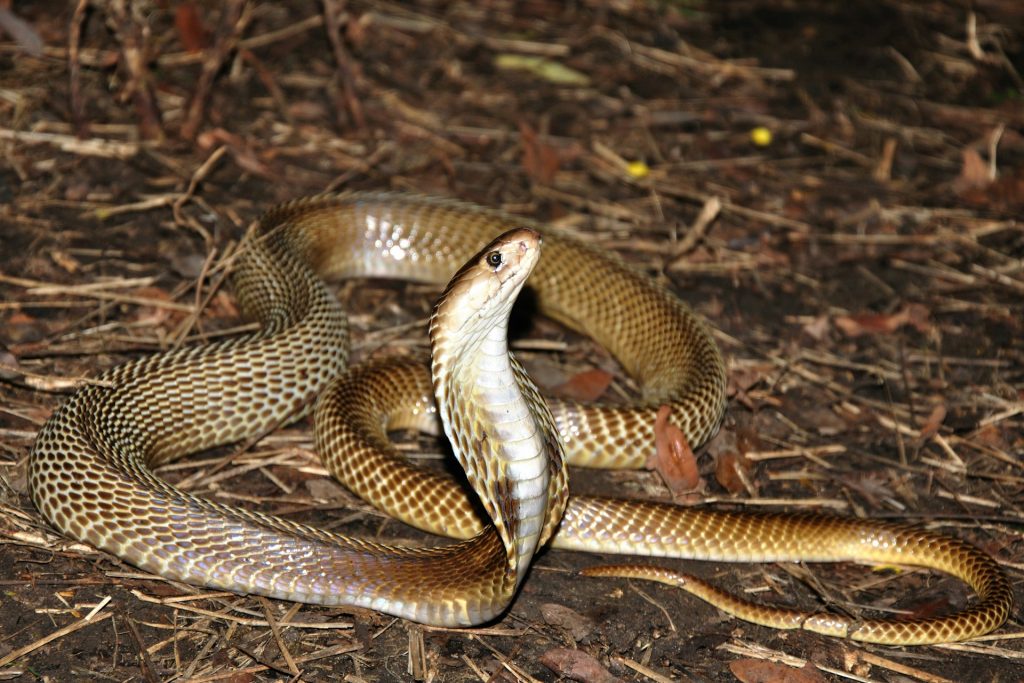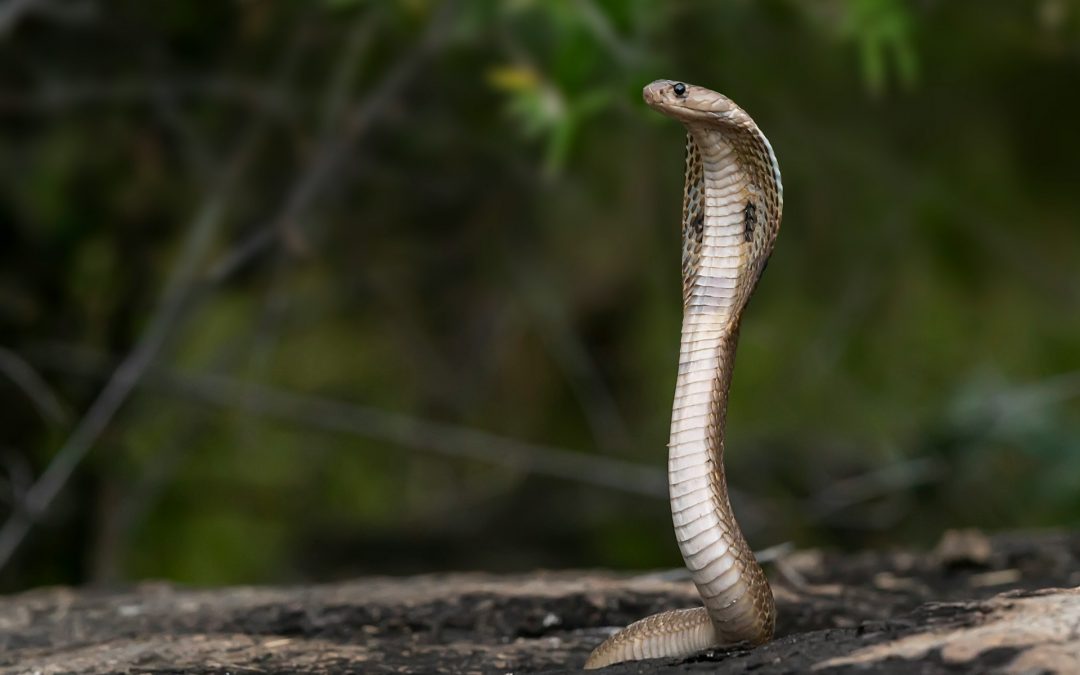The world’s largest venomous snake is the King Cobra (Ophiophagus hannah). Known for its impressive size and potent venom, the King Cobra holds a significant place in both wildlife and cultural contexts. Here are detailed insights into this formidable reptile:
Physical Characteristics of the Largest Venomous Snake:
- Length: The King Cobra can reach lengths of up to 18 feet (approximately 5.5 meters), making it the longest venomous snake in the world.
- Weight: They can weigh as much as 15-20 pounds (7-9 kilograms), though weight can vary based on length and overall condition.
- Coloration: Typically, King Cobras have a varying coloration ranging from olive-green, tan, or black, with pale yellow crossbands running the length of their body. Their belly is usually cream or pale yellow.
Habitat:
- Geographical Range: King Cobras are predominantly found in Southeast Asia, including India, Bangladesh, Myanmar, Thailand, Laos, Cambodia, Vietnam, Malaysia, Indonesia, and the Philippines.
- Environment: They inhabit dense highland forests, mangrove swamps, bamboo thickets, and along streams and rivers, thriving in humid environments.
Behavior and Diet:
- Diet: True to their scientific name, “Ophiophagus,” meaning “snake-eater,” King Cobras primarily prey on other snakes, including both venomous and non-venomous species. They have also been known to feed on small mammals and lizards.
- Behaviour: They are solitary creatures, typically avoiding humans, but can become aggressive if threatened, capable of raising the front third of their body and spreading their hood.
- Venom: The venom is a potent neurotoxin that can cause paralysis and respiratory failure in large prey. Despite its potency, the King Cobra’s strike rate for human fatalities is lower compared to other venomous snakes, largely because they avoid human interactions and deliver measured strikes.

The King Cobra, the world’s largest venomous snake, ready to strike!
Reproduction:
- Breeding: King Cobras are unique among snakes for their nesting behavior. The female constructs a nest of leaves and stays to guard it until the eggs hatch, showing a surprising level of parental care.
- Eggs: They can lay between 20 to 40 eggs, with an incubation period of about 60 to 70 days.
Cultural Significance:
- Cultural Symbol: In many cultures within its range, the King Cobra is both revered and feared, often featured in mythology, folklore, and traditional medicine.
- Conservation Status: Although not currently listed as endangered, King Cobras face threats from habitat destruction, poaching for skin, meat, and use in traditional medicine, leading to a gradual decline in their natural population.
Conservation:
- Protection Efforts: Conservationists are working to protect King Cobra habitats and reduce human-snake conflict through education and bolstering anti-poaching initiatives.
- Awareness Initiatives: Programs aimed at raising awareness about the ecological importance of King Cobras and other snakes are vital for their preservation.
Fun Facts:
- Distinctive Voice: Unlike most snakes that hiss, King Cobras produce a distinctive growling sound, thanks to its unique vocalization structure.
- Lifespan: In the wild, King Cobras can live for approximately 20 years.
The King Cobra, with its impressive size and majestic presence, continues to be a fascinating subject of study for herpetologists and a creature of intrigue for wildlife enthusiasts worldwide. Its ecological role as a predator helps maintain the balance in its natural habitat, highlighting the importance of conserving this remarkable snake and its environment.

